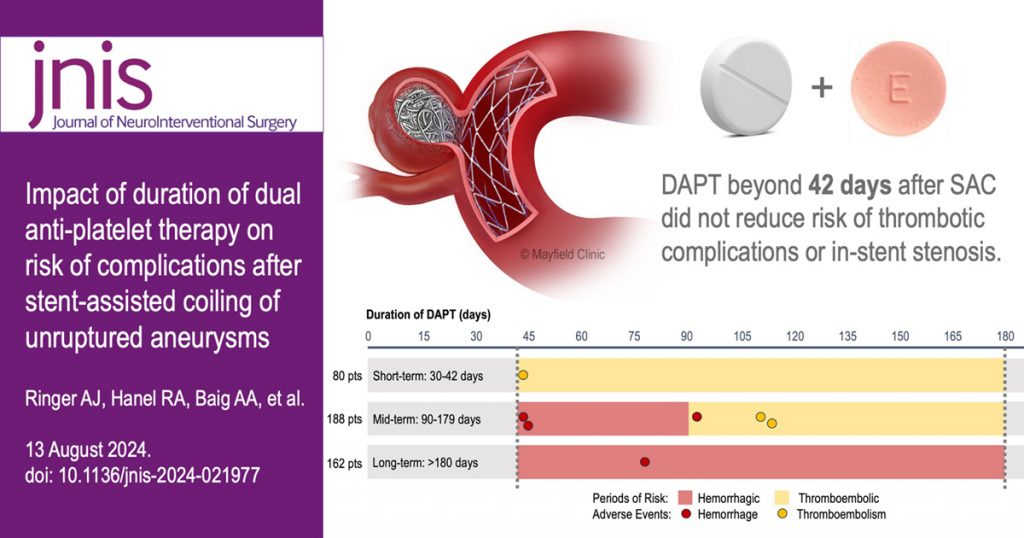For patients with unruptured brain aneurysms, new research led by neurosurgeon Dr. Andrew Ringer can help physicians better balance the risks of clotting vs. bleeding from taking blood thinners after aneurysm repair.
In a study newly published online by the Journal of NeuroInterventional Surgery, a group of neurovascular specialists from 12 centers around the country showed that a combination of a coils inserted into a brain aneurysm with a stent in the artery, plus dual anti-platelet therapy – a regimen of blood thinners often called DAPT – can reduce both risks for about six weeks. Dual anti-platelet therapy combines a daily aspirin with a second blood-thinning medication, called a P2Y12 inhibitor.

After those 42 days, the combined treatments don’t appear to reduce the risks of clotting, and the bleeding risk remains low, so physicians can discontinue the platelet therapy, the study showed. The patient remains on aspirin.
Dr. Ringer is a neurosurgeon at Mayfield Brain & Spine, one of the nation’s leading independent neurosurgery practices. He also is one of the founders of the Endovascular Neurosurgery Research Group, or ENRG. For this latest study, the researchers analyzed the data of more than 400 patients who had undergone stent-assisted coiling to repair their unruptured aneurysm and then received dual anti-platelet therapy.
“Patients with unruptured brain aneurysms face the double risks of a blockage that disrupts blood flow to the brain, called an ischemic event, plus the chance of a rupture that causes blood to hemorrhage into the cranial cavity,” Dr. Ringer said. “Our goal is to help treating physicians balance those risks and rewards with a consistent protocol, reducing unnecessary medication use.”
Dr. Ringer said ENRG has collaborated for 17 years to identify best practices and will continue to explore the impact of using DAPT with newer aneurysm occlusion devices.

“Our goal is to help treating physicians balance those risks and rewards with a consistent protocol, reducing unnecessary medication use.” – Dr. Andrew Ringer, neurosurgeon, Mayfield Brain & Spine
An aneurysm is a balloon-like bulge of an artery wall. As an aneurysm grows, it puts pressure on nearby structures and may eventually rupture. Approximately 1 in 50 Americans – about 6.8 million people – have an unruptured brain aneurysm. Most aneurysms are not diagnosed until after they bleed.
The research continues the Mayfield tradition of providing treating physicians with tools and techniques to better serve patients suffering disorders of the central nervous system, including those in the brain and spinal cord. Since 1937, Mayfield has promoted excellence in clinical care, education and research to fulfill its mission.